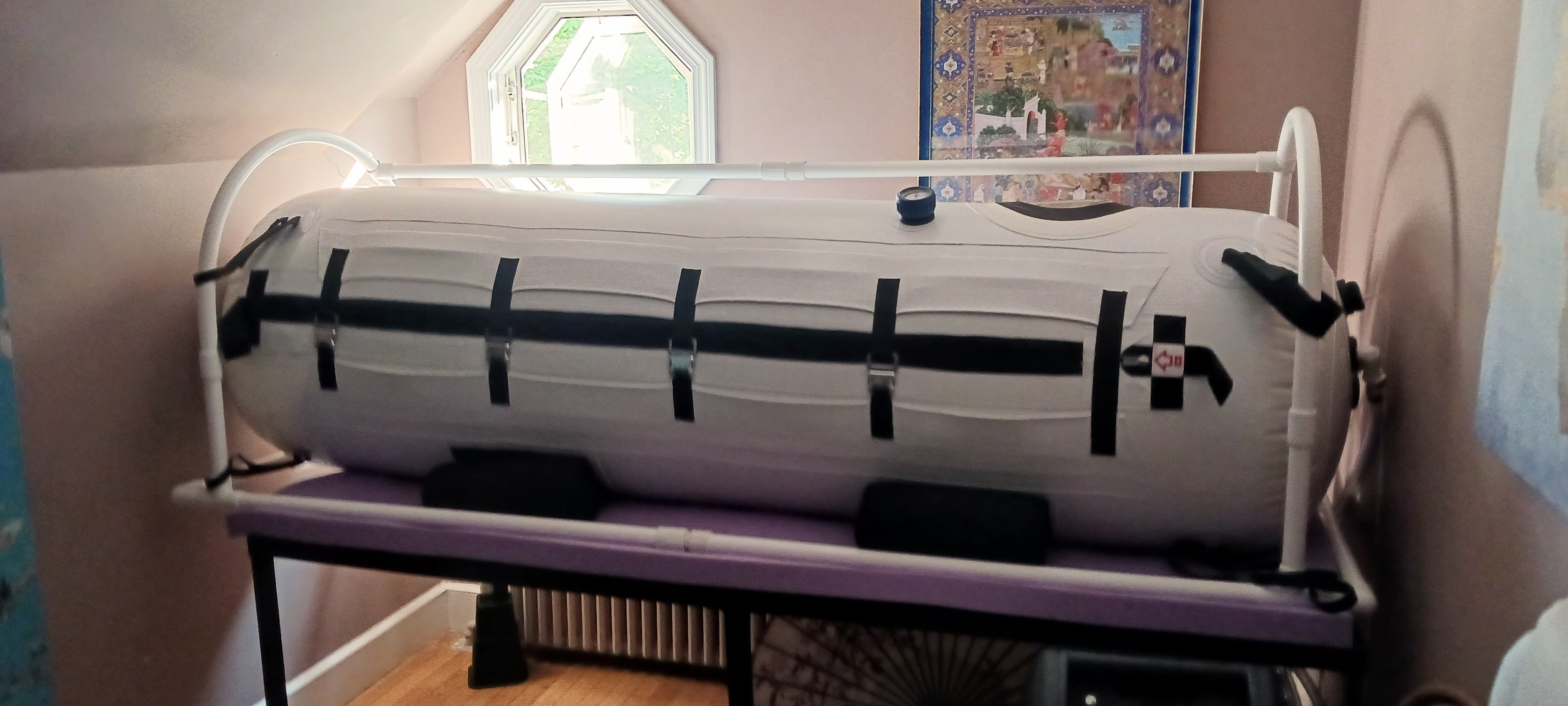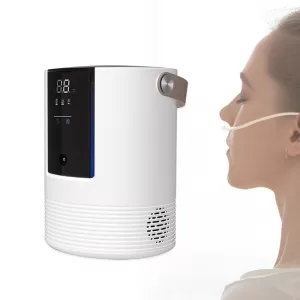Parkinson’s is a progressive neurodegenerative disease estimated to affect over 1 million Americans.¹
Emerging modern therapies, including such cutting-edge treatments as hyperbaric oxygen, molecular hydrogen, and photobiomodulation (or red light therapy), all show promise in improving quality of life and slowing or even halting disease progression.
These therapies are all available to the public at Camden Hyperbaric.
Hyperbaric Oxygen Therapy (HBOT)
HBOT involves breathing pure oxygen while in a pressurized chamber. While under greater than 1 atmosphere of pressure, oxygen is able to perfuse throughout the body (including the brain) much more effectively than normal, augmenting oxygen’s therapeutic potential.
As one researcher wrote, “The classical candidate for HBOT is a patient with unrecovered brain injury where tissue hypoxia is the limiting factor for the regeneration [processes]. In this patient, HBOT may induce neuroplasticity in the stunned regions where there is a brain anatomy/physiology mismatch.”²
The benefits conferred from HBOT in Parkinson’s may theoretically be related to two of the several theories behind what drives PD: mitochondrial dysfunction or neuroinflammation.
Several metastudies of standard pressure have found broad benefits in reduction of Parkinson’s symptoms. One such metastudy, Hyperbaric Oxygen Therapy Improves Motor Symptoms, Sleep, and Cognitive Dysfunctions in Parkinson’s Disease, concluded that
“Hyperbaric oxygen therapy improves motor function, relieves the severity of the disease, ameliorates cognitive function, and improves sleep quality while alleviating excessive daytime sleepiness in patients with Parkinson’s disease. The therapeutic mechanism of hyperbaric oxygen therapy may be related to increased cerebral tissue oxygen content, which contributes to anti-hypoxic, anti-inflammatory, anti-apoptotic, and antioxidant stress.”
One animal study on mild pressure (akin to the chamber at Camden Hyperbaric) also found a significant reduction in the decrease of dopaminergic neurons in PD.³

Hydrogen
Molecular hydrogen therapy has been investigated for over 20 years as a potential therapeutic agent. Owing to hydrogen being the smallest atom, it perfuses throughout the body with ease. This includes passing through the blood-brain barrier, which many therapies are unable to do.
Researchers have discovered that hydrogen possesses a potent antioxidant capacity. This body-wide antioxidant effect improves physical endurance in the healthy and reduces disease activity in many acute and chronic inflammatory illnesses, including heart disease, liver disease, autoimmune disease, and neurodegenerative illnesses.
As one researcher wrote, “Low concentration of H2 in drinking water can reduce oxidative stress in the brain. Thus, drinking H2-containing water may be useful in daily life to prevent or minimize the risk of life style-related oxidative stress and neurodegeneration.”⁴
One animal study concluded that “Molecular hydrogen prevented both the development and progression of the nigrostrital degeneration.”⁵
A study on concomitant hydrogen and photobiomodulation use in PD noted that, “UPDRS scores began significantly decreasing from the first week, and this improvement persisted until the end of therapy. Moreover, no adverse event was recorded.”⁶

Photobiomodulation (PBM)
Photobiomodulation refers to changing one’s biology with light. Our cells evolved to coordinate processes according to the presence of absence of light over hundreds of millions of years. This is known as circadian rhythm.
Wavelengths of blue and red light (including infrared light) boost production of the cellular energy currency ATP and hormones associated with the sleep-wake cycle. Numerous knock-on effects observed in some studies include anti-inflammatory effects; improved injury recovery and wound healing; boons to sleep quality, mood, and cognitive function; enhanced cerebral blood flow and blood oxygenation; and more.
An animal study on near-infrared light concluded that “NIr may have potential as an effective, minimally-invasive intervention for mitigating, and even reversing, progressive cerebral degenerations.”⁷ Some in vitro studies also found that PBM prevented neuronal death and notably improved production of the cellular energy currency ATP.⁸⁹
Get started at camdenhyperbaric.com, book at vagaro.com/camdenhyperbaric, or call 680-5766.
Camden Hyperbaric is located inside Camden Whole Health at 91 Elm St., Camden.




























